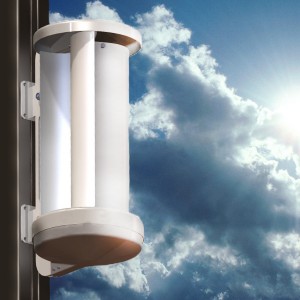Greetings,
I have taken a closer look at electrical needs for the 'proper camper'. I have a sleep apnea and I use device while I sleep to gain better life quality. Tricky part is that this device uses a lot of power (it uses brute force to moisturize water). Specific information is not available for my specific combination of factors. My educated estimate is that it uses 160Ah on 12V DC (run through converter to 220V AC) per night. As I try to sleep while using it running a generator is not really an option.
This means two things...
I need frigging huge leisure battery (add another devices .. double to accommodate for 50% max drain on battery)
I need to generate a lot of power to charge the batteries.. Generator is already planned.. Now I am getting worried about the hours it needs to run..
I intend to include solar panels..
I think I will have to raise the priority of wind generator ...
Do people have experience on installing them on rv / expedition class vehicles?
Main issues I struggle with are..
How to accommodate a wind generator in rv so that it is 'packed' nicely while traveling and 'raised' with little/ moderate effort while parked? Many of the turbines seem to be 3+ blade designs which mean that the 'packed' volume is big (? is this assumption correct?)
Where and How to install the mast so that it will be secure? I am going for raised roof design so attaching the mast to the upper part of cabin is not really an option. Would moderate sized wind turbine be enough to rock the camper box in moderate/ heavy winds?
With kind regards,
Janne
I have taken a closer look at electrical needs for the 'proper camper'. I have a sleep apnea and I use device while I sleep to gain better life quality. Tricky part is that this device uses a lot of power (it uses brute force to moisturize water). Specific information is not available for my specific combination of factors. My educated estimate is that it uses 160Ah on 12V DC (run through converter to 220V AC) per night. As I try to sleep while using it running a generator is not really an option.
This means two things...
I need frigging huge leisure battery (add another devices .. double to accommodate for 50% max drain on battery)
I need to generate a lot of power to charge the batteries.. Generator is already planned.. Now I am getting worried about the hours it needs to run..
I intend to include solar panels..
I think I will have to raise the priority of wind generator ...
Do people have experience on installing them on rv / expedition class vehicles?
Main issues I struggle with are..
How to accommodate a wind generator in rv so that it is 'packed' nicely while traveling and 'raised' with little/ moderate effort while parked? Many of the turbines seem to be 3+ blade designs which mean that the 'packed' volume is big (? is this assumption correct?)
Where and How to install the mast so that it will be secure? I am going for raised roof design so attaching the mast to the upper part of cabin is not really an option. Would moderate sized wind turbine be enough to rock the camper box in moderate/ heavy winds?
With kind regards,
Janne


